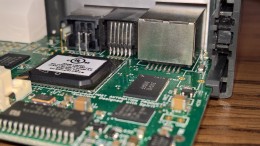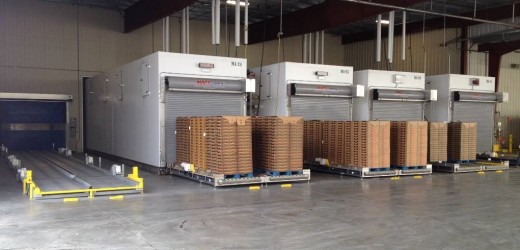Agriculture, Technology, and the importance of Precooling
Agriculture is a global industry and is as old as civilization itself. Technology has allowed the transport of perishable crops thousands of miles away from the farm the produce was harvested from. Today, the agriculture industry sees numerous benefits from technology, including flying drones for monitoring crops; autonomous driving tractors with GPS; and automated precooling.
- Precooling can be understood as rapidly removing heat from perishable goods and commodities.
Precooling is an important part of the postharvest stage of agriculture. Anytime shelf life is a concern, precooling or otherwise slowing the senescence (aging) of the fruit or vegetable is critical. The moment the fruit leaves the plant, it begins to deteriorate. Studies show that product quality and shelf life can be extended dramatically by precooling.
5 Precooling Methods
Not all produce can be cooled the same way. Apples, Peaches and Oranges are heartier than soft-fleshed fruits like berries. Some varieties may not even need to be precooled, but for those that do, there are 5 main cooling methods.
Hydro-cooling
Produce varieties are submerged or showered in cold water.
Vacuum Cooling
Product is cooled by drawing a vacuum and lowering the evaporation point of moisture in the product. As the product’s moisture evaporates, it releases its heat.
Room Cooling
Fruits and vegetables are stored in a temperature controlled room. The air in the room cools the product over time through convection.
Forced-Air Cooling
Air is chilled and then “pulled” through the product using pressure differential.
Ice Cooling
Ice and water mix to make a slurry that is packed into the product. Product is cooled by direct contact with the ice and the cold runoff.
 Precooling is Better with Automation
Precooling is Better with Automation
Most of these precooling techniques have been around for decades. But only within the last 12-15 years has the precooling industry started to become automated. PLCs (Programmable Logic Controllers) and PACs (Programmable Automation Controllers) have become mainstream, but there is still room for improvement.
As self-driving cars become viable, so too have self-driving forklifts become a reality. These machines can see in 360 degrees simultaneously and can process input faster than a human. While robotics have a higher up-front cost, they are safer than humans.
Precooling operations have a need for forklifts to unload produce from the fields and load it into the cooling equipment. Some precooling equipment can be retrofitted to work more autonomously. Some precooling systems come complete with automation built-in that can replace most of the manual tasks associated with cooling produce. Because these precooling systems can cool more aggressively, they have a lower active cooling time than conventional methods. Less cooling time translates to lower energy usage. Most cooling facilities can qualify for energy rebates when an automated precooling system is added. Sophisticated automatic precooling systems only run when they need to and then shut down to conserve electricity.
Safer, Faster, Greener
Automated precooling is safer because it requires less human involvement around heavy industrial machinery. It’s faster through the use of sensors and the inherent lack in a need for operator interaction at every junction. And it’s better for the environment through faster cooling and power-saving standby modes. All of these add up to cost-savings for cooling facility owners, who can pass on savings to consumers of fruits and vegetables.
Refinements and testing of technology coupled with competition in the industry will yield massive rewards for society. Food quality improvements, increased safety in the workplace, and larger potential profits. All that’s needed is for the produce cooling industry to jump in with both feet. The world will see the future when it ceases to fear technology and begins to embrace it.
